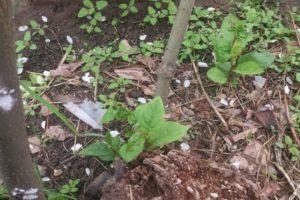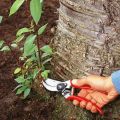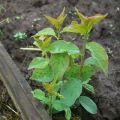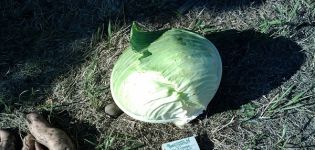The best methods on how to permanently get rid of the lilac overgrowth on the site
Lilac is a shrub prone to overgrowth when unfavorable factors appear. The root system of the plant is able to spread over considerable distances, releasing young shoots. Not all varieties of shrubs give growth, and an already captured area can be cleaned without much difficulty. There are different ways how to quickly and effectively get rid of lilacs, each gardener can choose the most convenient one.
Why does a lilac grow?
It is easier to fight overgrowth, knowing the reason for it. Lilac plentifully releases new shoots when exposed to adverse factors.
Unsuccessful planting bush
Lilac actively releases shoots if the place of growth for it is uncomfortable, threatening with disease. So the plant tries to save itself if the mother bush dies.
Insufficient deepening of the root system
In a shrub that is not deep enough when planting, the surface roots suffer from a moisture deficit in the upper soil layer, they begin to actively release shoots. The solution to the problem is to deepen the roots. You just need to add earth to the area around the plant.
Different types of bush damage
A small injury to the trunk is enough for the bush to actively release shoots. Damage to the bark and wood disrupts the circulation of nutrients in the tissues. The root system, trying to save the aerial part, starts the process of plant rejuvenation by releasing numerous shoots.

What harm can it do?
The uncontrollably growing lilac is capable of capturing the entire site in several years. Lateral roots give several offspring every year, which can appear at a distance of several tens of centimeters from the trunk.
A 50-year-old bush covers an area with a diameter of more than 10 m.
Gradually, the shoots begin to give offspring, and the territory of capture expands even more. It is impossible to use the captured area either for beds or for garden plantings.
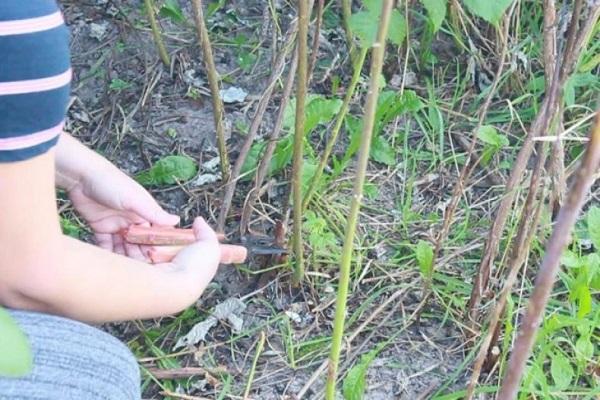
How to get rid of the lilac growth on the site
Some gardeners strive to completely remove lilacs in their area, others want to leave a beautifully flowering bush, they are not satisfied with only the growth. There are many ways to cleanse the site: chemicals and folk remedies are used, they are removed manually.
Use of chemistry
To quickly get rid of the offspring of lilacs, strong herbicides are used. Tornado, Roundup will do. However, when overgrowing, standard spraying with these chemicals is useless.
To surely get rid of the thickets, processing at the beginning of the growing season is carried out according to a special scheme:
- The shoots are not sprayed, but coated with a brush so that the active substance penetrates the plant tissues faster and in greater concentration.
- If the mother bush is large, and its growth is abundant, then you will have to process the shoots 2-3 times.
- When the growth of young plants stops, it is advisable to cover the area around the bush with dark material, leave it until next season.

If you want to get rid of thickets faster, you can use arboricides - chemicals that act on woody and shrub vegetation.
Arboricides are potent substances. It is necessary to strictly observe the dosage, use chemical protection agents.
Manual removal
Many gardeners use a simple and old way to remove overgrowth - uproot the bush. Usually this method is used if chemical pickling is undesirable.
Algorithm of actions:
- The trunks of the mother plant are cut off.
- Each offspring is cut to the root.
- The top soil layer is removed so that the roots are accessible.
- Large areas of the root system are uprooted with a shovel.
- They are taken for lateral root layers, pulling them out of the ground all to one.
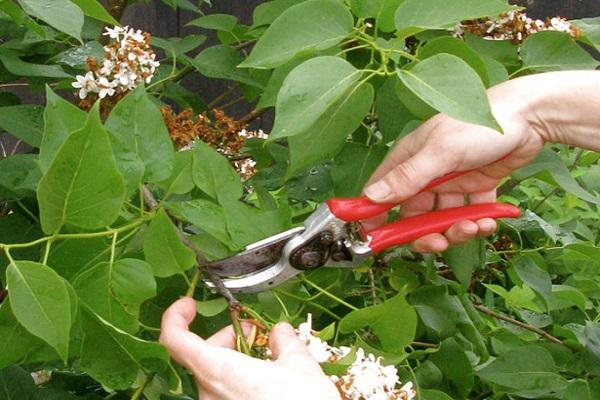
Folk remedies and recipes
If you do not want to mess with a shovel, you can use effective folk remedies:
- Cover the overgrown area with salt (1 kg per 1 m2). Drizzle with boiling water. Cover with roofing felt or other dark material. Leave it on for a year or two.
- Cover the ground with fresh manure. The procedure is carried out at the end of the growing season, the soil surface is covered with dark material for a year. Due to the saturation of the soil with organic matter, the plant will go into active growth instead of preparing for winter dormancy. The offspring will lose a lot of strength and die.
- Sodium nitrate acts similarly. It is also introduced in high concentration into the soil at the end of the growing season.
A set of preventive measures
Experienced gardeners share tips on how to avoid lilac overgrowth on the site:
- When preparing the landing hole, the diameter and depth are determined taking into account the enclosing screen to be installed.
- The emerging shoots are cut off without leaving hemp.
- To weaken the offspring and easier subsequent removal of them, the ground around the plant is covered with a thick layer of sawdust or other mulch.
- Faded lilac brushes are cut off until they give seeds.

Are there varieties of lilacs that do not give growth?
The vast majority of lilac varieties give growth. But there are varieties that are not able to grow:
- Dream;
- Belicent;
- Hungarian;
- Hiawatha;
- Moscow beauty;
- Columbus.
The Monge variety produces little growth. But subject to the planting technology and proper care, overgrowth is excluded.

